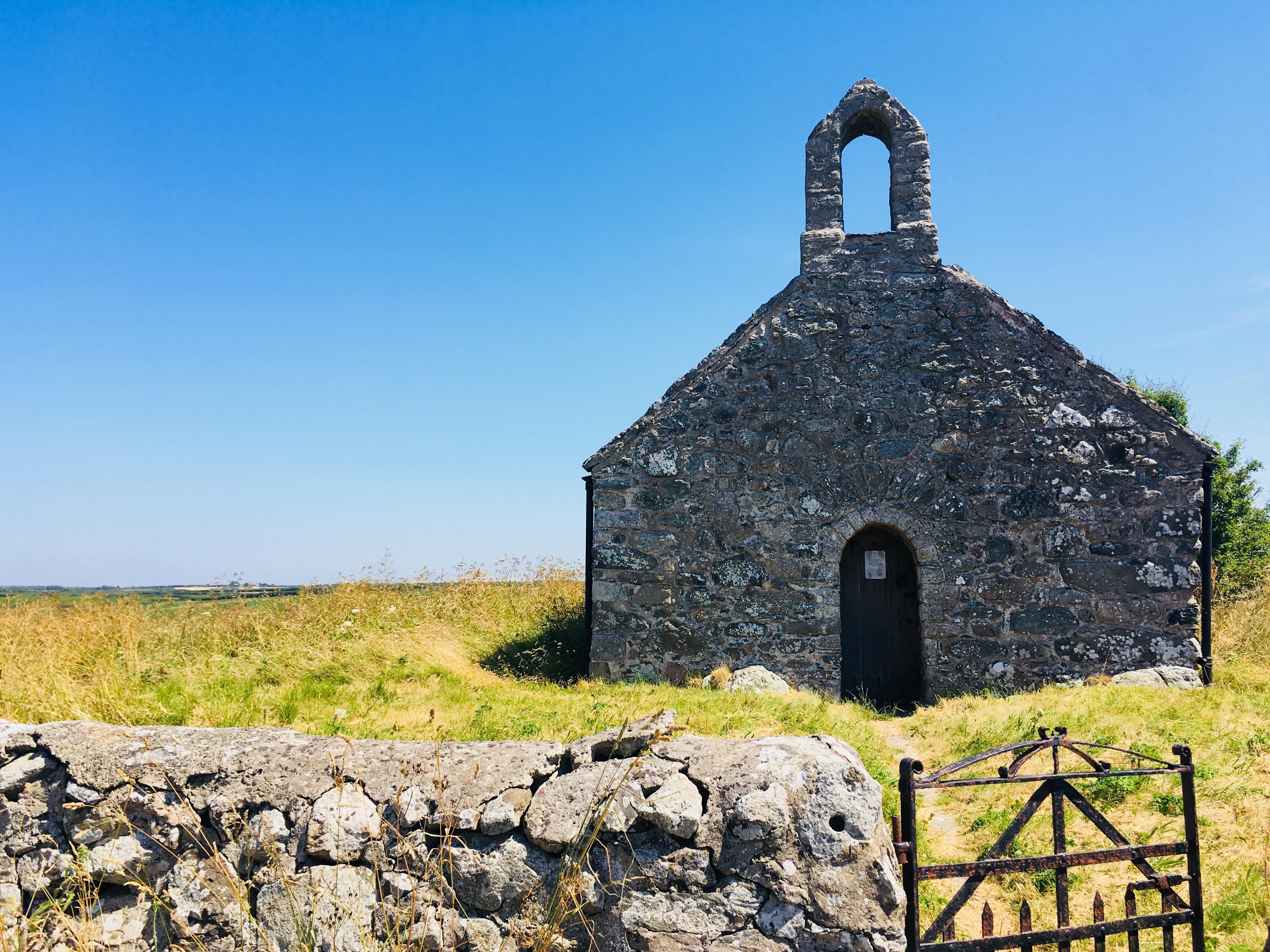St Peulan
Llanbeulan, Anglesey
St Peulan is medieval in origin, and stands in isolation at the end of its raised, grassed, causeway, which turns off the road signposted to Dolbaen.

Tal y llyn sits in a huge churchyard which throws into relief its diminutive scale.
Tal y Llyn, Anglesey
Like so many Welsh buildings it is difficult to date but its origins are clearly medieval and its fittings are for the most part 18th century, including the communion rails and pulpit.
Tal y Llyn used to be the centre of a reasonably sized township, there were 22 houses before the Black Death. It sits on a raised mound which the Royal Commission on the Ancient and Historical Monuments of Wales suggest could be pre historic.
This is decidedly religion without pretension, simple massively structured walls, sheltering a space in which there seems no differentiation by wealth. The seating is of one form only and can hardly have been more utilitarian. Everybody sits on a backless plank trenched at one end into a low stone wall and supported at the other by a timber paddle.
Llanbeulan, Anglesey
St Peulan is medieval in origin, and stands in isolation at the end of its raised, grassed, causeway, which turns off the road signposted to Dolbaen.
Aberffraw, Anglesey
A 12th century parish church, St Beuno's may have been used as a royal chapel during the early Middle Ages, as the princes of Gwynedd had a court in Aberffraw.
Llangadwaladr, Anglesey
Best known as the burial place of King Cadfan of Gwynedd, who died around 625 AD, shortly after the church was established.